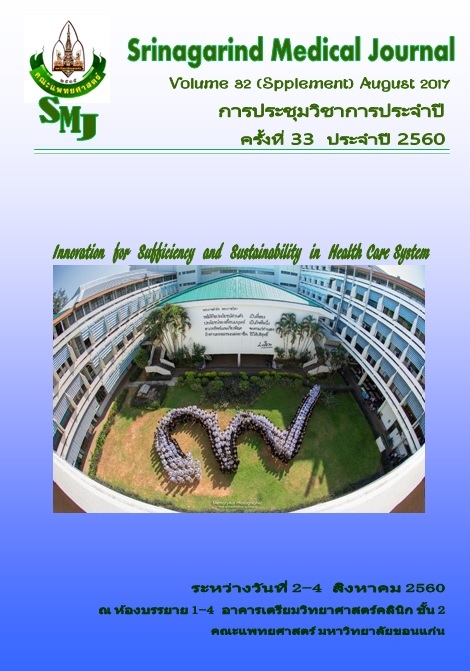The Primary Role of Development LPPC in PAS in Blood Transfusion Centre, Faculty of Medicine Khon Kaen University, Thailand
Keywords:
LPPC, PASAbstract
Background and objective: Platelet additive solutions (PAS) are crystalloid nutrient media used in place of plasma for platelet storage. They replace 60-70% of plasma in platelet components. So the amount of storage plasma can be decreased. Platelet stored in PAS have been demonstrated to have a lower risk for allergic transfusion reactions and appeared to have equivalent clinical efficacy for controlling bleeding, compared to platelets stored in 100% plasma. We try to bring PAS to replace plasma in making leukocyte poor platelet concentrates (LPPC) compared with conventional methods that use plasma, 1 bag of total buffy coat 4 units. This study aimed to prepare LPPC in PAS in our routine work, instead of the traditional LPPC.
Methods: PAS and plasma using a ratio of 65:35 in accordance the standard reference. Then LPPC in PAS were measured the volume, content of platelet concentrates, white blood cell contamination and the titer of anti-A and anti-B compared to traditional methods.
Results: LPPC in PAS had volumes 304 ± 20 ml, content of platelet concentrates 2.8 ± 0.5X1011 cells/unit and had 0.1X109 white blood cells contamination. LPPC from traditional methods had volumes 324±16 ml, contents of platelet concentrates 3.9 ± 0.3X1011 cells/unit and had 0.1X109 white blood cells contamination. The titer of anti-A and anti-B in LPPC in PAS is less than or equal to 64, all of which are classified as low titer, but LPPC from the traditional way with a titer of anti-A and anti-B over 64 about 20 %.
Conclusion: All of LPPC in PAS are classified as low titer, which led to the patient at any group. Statistical tests showed that there was no difference in volumes and white blood cells contamination from the two methods, but the content of platelet concentrates obtained from traditional methods over to new methods of statistical significance. However, the content of platelet concentrates from LPPC in PAS provides reached the recommended quality of Council of Europe (EU) and National Blood Centre, Thai Red Cross Society (TRC) which contents of platelet concentrates equal or more than 2.4X1011 cells/unit. This may be due to a new method that we have developed a process to make it better in the future.




